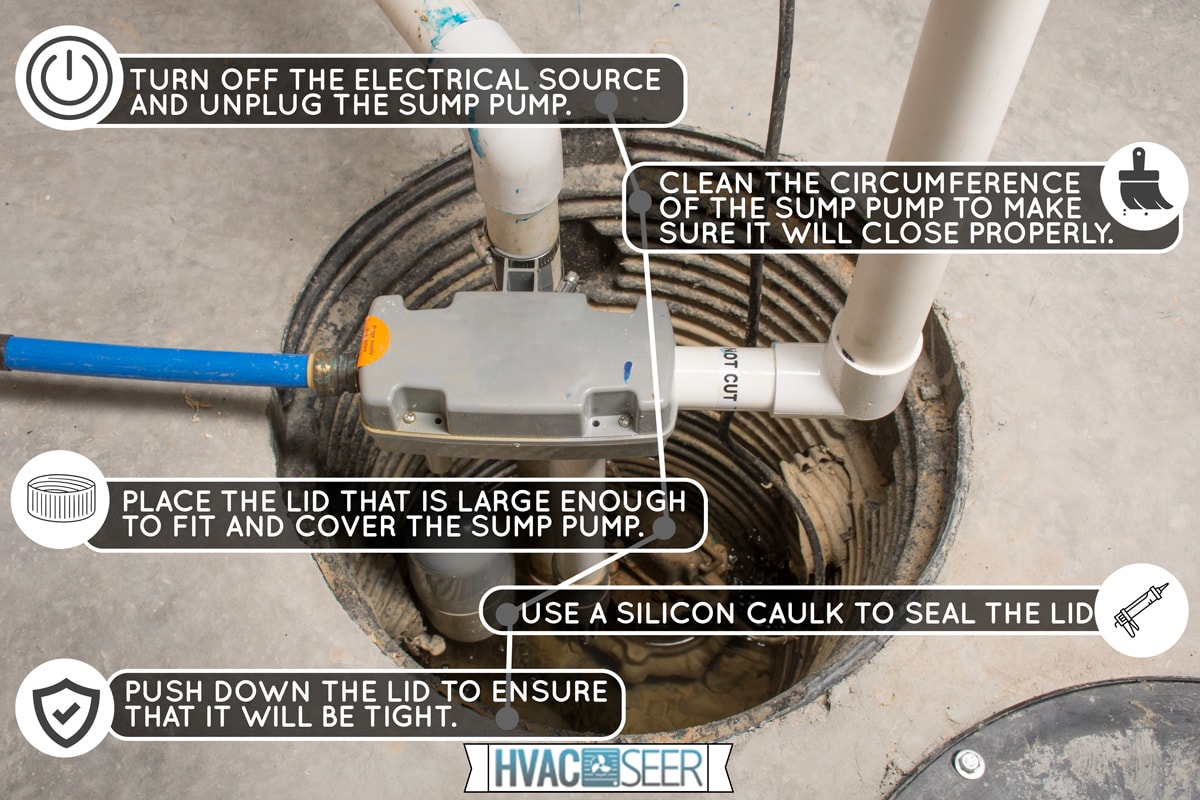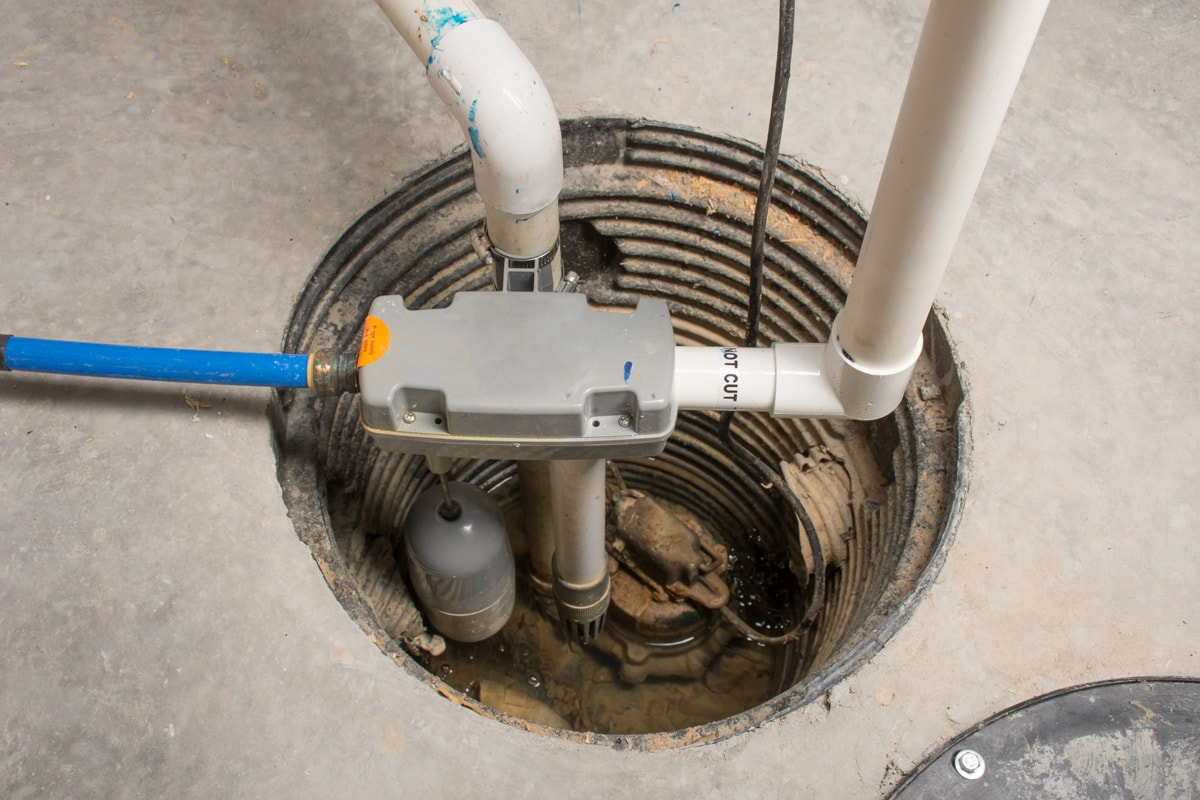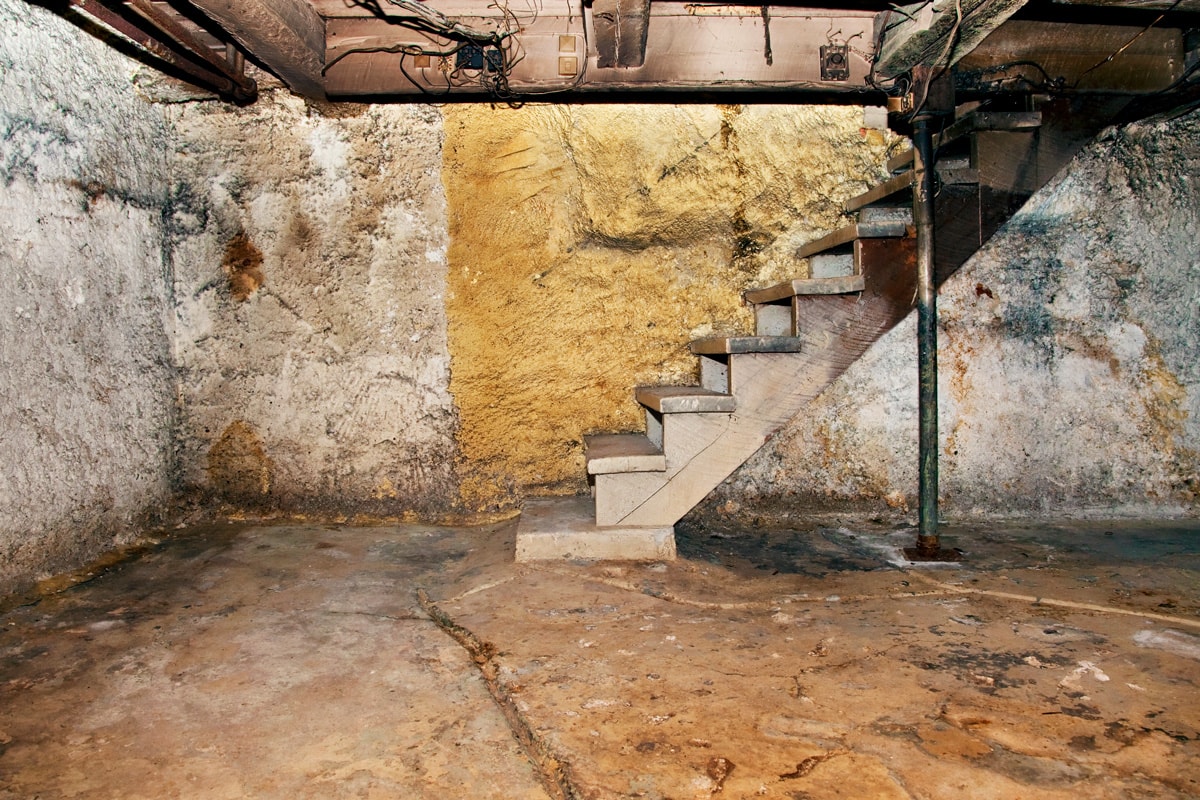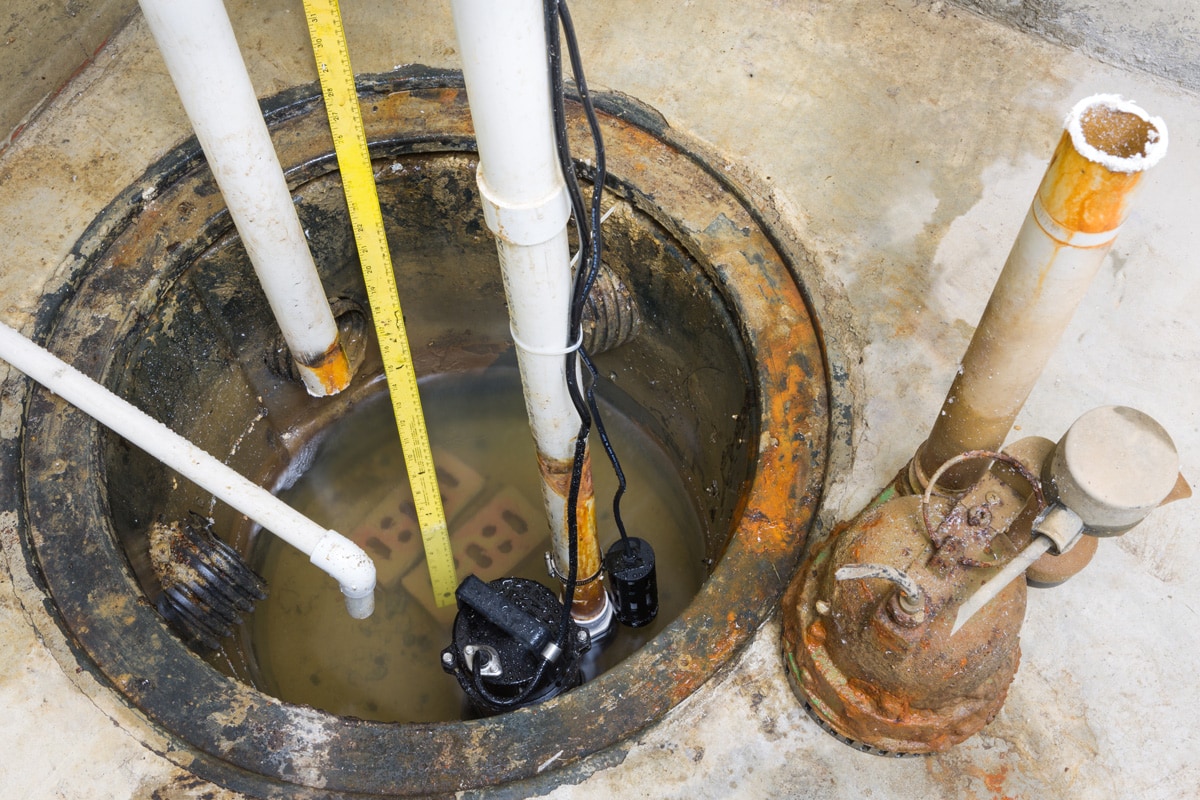Sump pumps are an effective way to remove radon from a basement. But how could you seal a sump pump? Can you reopen it after sealing? Why should you keep away from radon? No worries! We did research to answer these questions.
Sealing the sump pump is an important way to protect you from the harmful evaporation of radon water. A sump pump usually comes with a detachable lid. You can follow the steps below on how to seal a sump pump:
- Turn off the electrical source and unplug the sump pump.
- Clean the circumference of the sump pump to make sure it will close properly.
- Place the lid that is large enough to fit and cover the sump pump.
- Use a silicon caulk to seal the lid.
- Push down the lid to ensure that it will be tight.
In this article, we'll take a closer look at sealing a sump pump for radon. We'll explain why it's important and why you should restrict radon in your basement. There's so much more to learn. Come and join us in reading!

How to Seal a Sump Pump for Radon

Sealing the sump pump is crucial to keeping your basement radon-free. Usually, there is a lid provided upon the installation of the sump pump. Imagine a large basin that's being buried underground to collect the wastewater and redirect it to the local sewer. That's basically the purpose of a sump pump.
Unless your contractor made a sump pump cover that you can lock, you should find the right size of rubber lid for the sump pump. You can ask the contractor for recommended product to purchase.
You may need silicon caulk for a portable rubber lid. Squeezing along the circumference of the lid will cause silicon caulk to harden quickly.
See this silicon caulk on Amazon.
To help you visualize the steps in sealing the sump pump, just watch this video:
https://m.youtube.com/watch?start=60&end=94&v=F_oFN_uXmaU&feature=youtu.be
Can A Sump Pump Freeze in Winter?
Yes, some parts of the sump pump can be frozen in the cool temperatures of the winter season. This may cause the sump pump to malfunction and even make the lid hard to open.
To avoid freezing the sump pump, you can keep the water running through the drainage. This will help ease the freezing temperature and prevent ice from forming inside the drainpipes. A small amount of water to drain should be enough. Just stop draining water when the temperature becomes hotter or when the winter is over.
What Does Radon Do to Your Health?
Radon is a radioactive chemical that can be found in rocks and other ground elements. Exposure to radon can cause serious health problems such as lung cancer and other breathing difficulties. That's why it's important to seal the sump pump and mitigate or lessen the radon's effects. Radon mitigation helps keep the air clean, especially in basements.

At first, the effect of radon on one's health might not be obvious. But as time passes by, signs of prolonged exposure to radon will emerge. These signs include headache and a weak immune system. Remember that radon is also harmful to pets, specifically that they cannot speak to us about what their bodies feel.
You can easily detect the level of radon in an area, so that you'll know if it's still safe in such place.
See this radon detector on Amazon.
However, there are ways to reduce radon levels aside from having a sump pump. You can consider improving the ventilation in the area or cleaning the basement more frequently. Also, see if there are cracks in the basement wall. Seal those cracks to block radon from entering.
How Does Radon Mitigation Function?
A sump pump is just a part of the mitigation system. There are other parts that have their own purpose to complete the mitigation process. See below on how the entire process is done.
Radon Mixes with Wastewater
First, the radon will penetrate the ground and insist on finding a way to evaporate. It's easier for radon to spread if the basement floor has damage, yet it's harmful to leave the floor in such a condition. You should repair the floor and allow the sump pump to do its task.
The radon will mix with the wastewater inside the sump pit. The wastewater is collected from the residential drainage system like a sink, bathroom, and laundry area. Then, the wastewater will carry the harmful gas, so that it will be easier for the sump pump to push radon away. We can call this mixture a radon water.
You need to use your home's drainage to at least provide water for the sump pit. A daily use of the kitchen sink should be enough to mix radon with water.
The Sump Pump Activates
When the sump pump reaches the required water level, it will automatically push the water to the discharge pipe. It will send enough pressure to be able to lift the water up the pipe. However, you can manually turn on the switch to activate the sump pump.
You may hear a sound that indicates the pump's movement until the sump pit is empty. The sump pump will turn off again if there's not enough water to push. Otherwise, you should check if the pump is broken. Continuous pumping may mean that it's malfunctioning. If that's the case, try switching the sump pump off and on, or call your contractor.
Discharge and Evaporation
The radon water will then pass through the discharge pipe that connects up with the main sewer system outside your house. Then, you'll find a check valve anywhere between the sump pit and the discharge pipe. The check valve allows radon water to flow, but locks the pipe afterwards to block radon water from flowing back to the sump pit.
On the higher portion of the discharge pipe, you'll find a fan that helps evaporate the remaining radon gas inside. The fan will then force the gas to exit up above the roof or near the local drainage. This is to ensure that no radon is trapped inside the pipe, as the radon may leak once the discharge pipe breaks.
What to Do When a Sump Pit Overflows?

An overflowing sump pit is a serious problem. If you see your basement flooded with radon water, quickly leave the area and put a safety mask on. You should not panic, as we'll provide you with steps on what to do when the sump pit overflows. Consider the steps below:
- Refrain from draining water to prevent the sump pit from receiving more water.
- While wearing a face mask and gloves, carefully turn off or unplug the sump pump. It's even better if you have waterproof boots to protect your feet from radon exposure.
- Try resetting the pump to see if it will push the radon water into the pipe. Otherwise, the pump might be broken.
- Inspect the check valve by detaching it from the pipe. You need to declog or replace it to let the radon water flow again.
- If everything doesn't seem to be going well, you can call your contractor for help.
Does the Sump Pit Need to be Emptied?

At least every three months, you should empty the sump pit by cleaning it. The radon water may stay there and never exit through the discharge pipe if the sump pit is always full. Also, cleaning helps maintain the good quality of the sump pump motor.
Simply follow the steps below to clean the sump pit:
- Turn the sump pump off and disconnect from the main power supply, then uncover the sump pit.
- While wearing a mask and safety gloves, loosen the discharge pipe to drain the remaining dirt inside of it.
- Clean the sump pit by removing the mud and other solid waste. Put the solid waste into an old bucket or plastic bag to avoid spilling radon water on the basement floor.
- Use a vacuum to suck off the remaining water.
- Tighten the discharge pipe and cover the sump pit again.
Conclusion
In this article, we found out how to seal your sump pump for a radon mitigation system. We shared its importance, specifically for ventilation and health concerns.
We learned that sump pumps can freeze during winter and provided a quick way of resolving it. Also, we explained how radon mitigation works.
Lastly, you learned what to do when the sump pit overflows. Keep in mind that it's crucial to keep the sump pit clean for better system mitigation.
Do you want more articles like this? Then you'll love to read more here:



YouTube link to explain how to seal sump pump pit does not explain the same if I have backup sump pump also. I have regular sump pump, backup sump pump and radon pipe to suck air. All 3 systems are going in sump pump pit. Could you add any information about how to seal sump pump pit in that case?